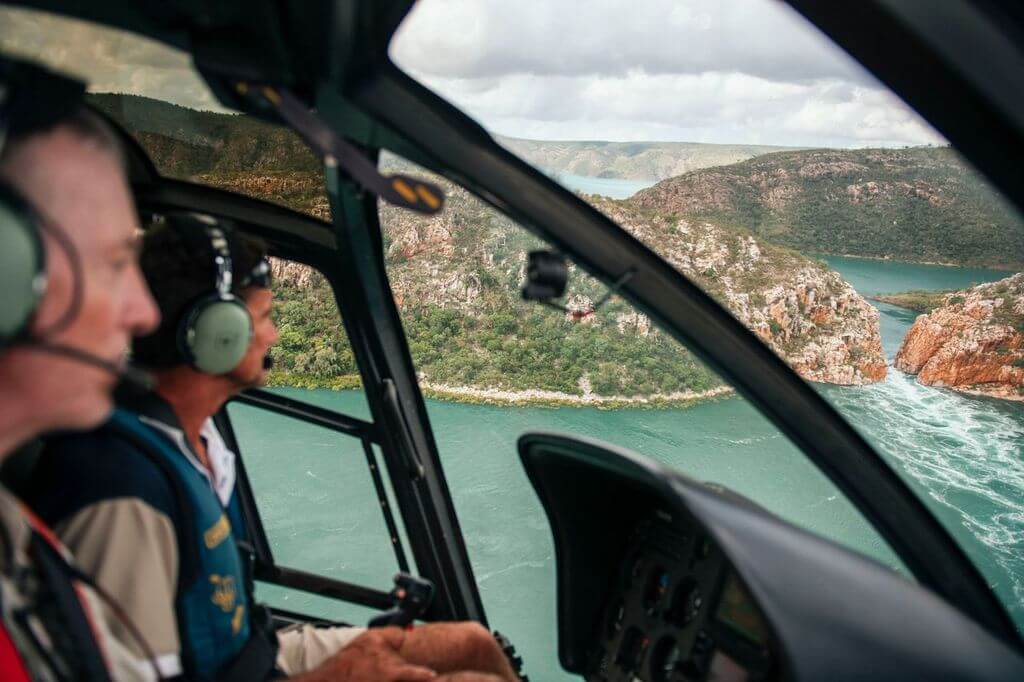The Kimberley region is a testament to Earth’s ancient history. This region is not just renowned for its dramatic landscapes, but also its significance to geologists.
Did you know the Kimberley is home to some of the planet’s oldest rocks? It serves as a natural archive, where layers upon layers of geological activity reveal insights into Earth’s earliest life and the dramatic transformations over billions of years.
If you’re curious about the fascinating Kimberley geology, read on.
How did the Kimberley geologically form?
The geological formation of the Kimberley is a narrative of ancient forces sculpting a landscape over millennia. It features some of the oldest rock formations known to science, dating back nearly two billion years. This extensive timelike gives us a rare glimpse into the Precambrian era, a time when the Earth’s crust was still forming and life as we know it was just beginning!
Tectonic activity
During this era, the Kimberley region saw some intense tectonic activities. The Kimberley Craton, a stable block of ancient continental crust, formed the core of the region. Throughout the Archean and Proterozoic eons, this craton was shaped by repeated episodes of tectonic compression and thermal events, which contributed to the formation of its complex metamorphic and igneous rock structures.
Volcanic activity and sedimentation
Once the Kimberley Craton stabilised, the region experienced pretty significant volcanic activity and extensive sedimentation processes. Over time, volcanic eruptions deposited layers of lava and ash, which were interspersed with sediments washed in from eroding landmasses nearby. These layers compacted and cemented over millions of years, and formed many of the sedimentary rock formations we see today.
Weather and erosion
The distinctive appearance of the Kimberley today owes much to the relentless forces of weathering and erosion. The climate changes over millennia, including periods of intense rainfall and drought, have sculpted the sandstone into dramatic gorges and peculiar dome formations.
Read more about the Kimberley climate.
Iconic Kimberley geological formations

King Leopold Ranges
Central to the Kimberley’s geological identity are the King Leopold Ranges, formed through intense folding and faulting processes. Their rugged ridges tell the tales of immense tectonic pressures over time. Made of Torridonian sandstone, these ranges have weathered into a series of sharp crests and deep gorges that provide a window into the Earth’s crust.
Bungle Bungle Range
Equally striking is the Bungle Bungle Range, known for its dome-shaped sandstone structures. Located in Purnululu National Park, these striking dome-shaped formations are composed primarily of Devonian-age sandstone – approximately 360 million years old!
The distinctive beehive appearance is the result of different erosion processes that have sculpted these formations over centuries. The black and orange bands are the result of cyanobacteria growing on layers of sandstone.
Mitchell Falls
Mitchell Falls is a spectacular multi-tiered waterfall on the Mitchell River. It’s a testament to the power of water; the falls cut through both quartzite – a metamorphic rock known for its hardness and resistance to weathering – and softer sandstone layers. The area around the falls is made up of gorges and plateaus, which are a striking example of river erosion over time.
Kimberley Plateau
The Kimberley Plateau is an expansive area of largely undisturbed sandstone terrain. It rises up abruptly from the surrounding plains, creating a stark, elevated landscape. Primarily composed of sandstone laid down during the Precambrian to Paleozoic eras, this sandstone has been deeply incised by river systems over time, forming dramatic gorges and isolated mesas.
Windjana Gorge
This gorge is a prime example of the region’s Devonian reef formations. The walls are composed of ancient limestone, which originated from coral reefs about 350 million years ago when the area was submerged beneath a shallow sea. Today, Windjana Gorge provides a unique cross-section of these reef formations.
Read more about the best spots in the Kimberley.
Unique geological phenomena
The Kimberley region is not only a showcase of ancient geological formations but also a site of unique geological phenomena.
Horizontal Falls

One of the most extraordinary natural features in the Kimberley is the Horizontal Falls, located in Talbot Bay. Unlike traditional vertical waterfalls, the Horizontal Falls are characterised by powerful tidal currents rushing through narrow coastal gorges.
These falls show the intense tidal forces at play along the Kimberley coast, where the massive tidal ranges can create rapid water flows horizontally, a spectacle dictated by the resistant rocks forming the gorges.
Read more about the Horizontal Falls.
Weathering and erosion
This isn’t one specific location; rather, you’ll see it throughout the region as you travel through. The region’s climate, marked by wet and dry seasons, accelerates the breakdown rock, particularly sandstone, which is prevalent throughout the Kimberley.
You can see this in the smooth surfaces of the Bungle Bungle Range and the jagged outlines of the King Leopold Ranges. Erosion by wind and water has carved deep gorges and shaped isolated pinnacles that stand as natural sculptures.
Rare minerals and gems
The Kimberley region is known for its pink diamonds, one of the rarest, most valuable gems in the world. These were found in the Argyle Diamond Mine until its eventual closure. These gems are a reminder of the region’s volcanic past.
Experience these Kimberley geological wonders firsthand
There’s nothing quite like seeing the incredible geological phenomena in person. Join True North on an unforgettable journey into the heart of one of the world’s most ancient and dynamic landscapes.
Explore our Kimberley cruises and step into a story millions of years in the making. Book your spot today!






